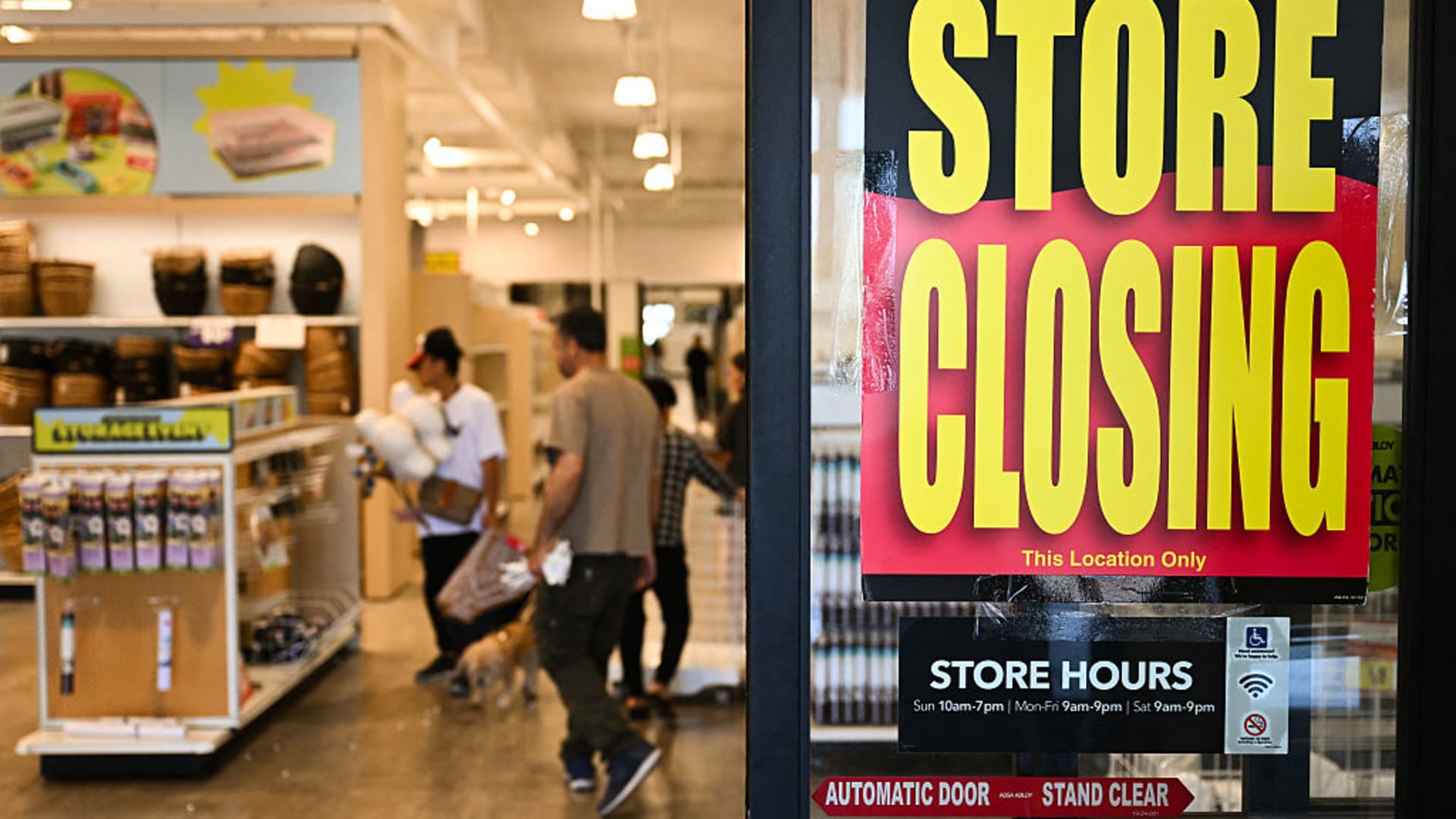Miami Beach, Florida, Manolo, restaurant, employees at bakery counter. (Photo by: Jeffrey Greenberg/Universal Images Group via Getty Images)
Jeff Greenberg | Universal Images Group | Getty Images
Latinas are making substantial contributions to the U.S. economy.
The female Hispanic population contributed $1.3 trillion to gross domestic product in 2021, an increase from $661 billion in 2010, according to a recent report funded by Bank of America.
That marks a real GDP growth rate of 51.1% between 2010 and 2021, meaning an economic contribution that’s 2.7 times that of the non-Hispanic population.
The total output of U.S. Latinas in 2021 was also larger than the entire state of Florida that year, the report noted, citing data from the Bureau of Economic Analysis. In fact, only those from California, Texas and New York, respectively, were larger that year.
Despite those large figures, some economists think that U.S. Latinas could be contributing more to GDP than the report’s figure.
Belinda Román, an associate economics professor at St. Mary’s University, said that there’s activity in various areas that the data may not be capturing. Child care is one of those.
“A lot of that is uncompensated care,” she said in an interview with CNBC. “Interestingly, there are a lot of Latinas in that space that you’re not going to see in these numbers, so I think to some extent it may not be big enough actually.”
Economist Mónica García-Pérez also believes the figure could be bigger, saying that some of Latinas’ “unmeasured” contributions — such as being a stay-at-home mom that’s providing care for other neighbors’ kids, for example — allow “other groups to participate in the labor market.”
She also pointed to the occupational positions they hold more generally as posing some difficulty when assessing their contributions.
“This group is very sensitive to shocks, and it could be related to their presence in sectors where there’s a lot of mobility or turnover,” the Fayetteville State University economics professor said. She added that they tend to be concentrated in care and service industries, such as health care, retail and hospitality. This is what makes them a “moving piece” in economic cycles.
In the case of a recession, for instance, García-Pérez said Latinas are “likely to lose their job much faster being in the sectors they’re in,” as seen during the Covid-19 pandemic. “But they also may be more likely to be reincorporated in the market because the cost of entry and the type of positions they enter at have lower barriers.”
A growing force
When it comes to labor force participation, Latinas are outpacing other groups, the BofA report showed.
From 2000 to 2021, the participation rate for Latinas rose 7.5 percentage points. On the other hand, the participation rate of the non-Hispanic women in the same period was flat.
The group has also been more resilient than others. Although labor force growth slowed overall in 2020, the growth rates for Hispanic men and women were still positive. Conversely, the non-Latino labor force growth rate was negative that year, meaning that more people left the labor force than entered it.
Beyond that, Latina GDP grew more than five times the rate of non-Latino GDP between 2019 and 2021, gaining 7.7% compared to 1.5%. Meanwhile, the GDP of Hispanic men grew nearly four times the rate of non-Latino GDP in those years at 5.9%.
These contributions are notable given that Latino households were some of the hardest hit by the pandemic.
“When the economy broadly is most in need, that’s actually when we see the most dramatic contributions of U.S. Latinas,” said economist Matthew Fienup, the report’s co-author and executive director of the Center for Economic Research and Forecasting at California Lutheran University. “Whereas all Latinos are a source of economic strength, Latinas are drivers of vitality that the economy needs.”
“If Covid-19 couldn’t stop this growth, it’s hard to see what would,” said David Hayes-Bautista, report co-author and director of the Center for the Study of Latino Health and Culture at the School of Medicine at UCLA.
Drivers of change
Since the late 1970s, the share of Latinas with a job has grown. Specifically, the employment-to-population ratio for the group has surged from 41.6% in December 1978 to 56% in December 2023, per data from the Economic Policy Institute.
By comparison, the ratio for Black women — who alongside Latinas experience the most severe wage gaps relative to white, non-Hispanic men — has advanced 11.9 percentage points. The metric for women overall has climbed by 8.8 percentage points in that period.
“Some of this is an expansion of opportunities for women,” said Elise Gould, a senior economist at EPI. Part of this is also due to a lack of wage growth for typical workers over the past few decades, she said. “Because it can be hard to get ahead, households may have had to put in more work hours to do better.”
That seems to be paying off to some extent. The growth in labor force participation as well as a rise in educational attainment are resulting in income gains for the group, notably about 2.5 times that of non-Hispanic women from 2010 to 2021, the BofA’s report co-authors found.
Brooklyn Puerto Rico Day Parade on June 13, 2021 on Knickerbocker Avenue in the Bushwick neighborhood of Brooklyn, New York.
Andrew Lichtenstein | Corbis News | Getty Images
Hayes-Bautista also cited intergenerational shifts and Hispanic women’s more rapid population growth over the Hispanic male and non-Latino populations as another catalyst of Latinas’ economic output.
“What we started to see in about the year 2000 is that the immigrant first-generation started to age out of the labor force,” he said. “As they age out, their shoes are being filled by their daughters and granddaughters, who are twice as numerous in terms of population size, and they’re bringing much higher levels of human capital.”
Latinas have especially bolstered the contributions of Latinos as a whole. Fienup told CNBC that Latinos’ total contributions have pushed labor force growth positive in certain regions across the country at times when the non-Latino labor force was contracting.
“We expect that dynamic to be increasingly important over the next three decades,” he said. “What we’re seeing now is really just the beginning of what will be an increasingly important story in the United States economy.”

 Economics1 week ago
Economics1 week ago
 Economics1 week ago
Economics1 week ago
 Personal Finance1 week ago
Personal Finance1 week ago
 Accounting1 week ago
Accounting1 week ago
 Blog Post4 days ago
Blog Post4 days ago
 Economics5 days ago
Economics5 days ago
 Personal Finance1 week ago
Personal Finance1 week ago
 Finance1 week ago
Finance1 week ago





















